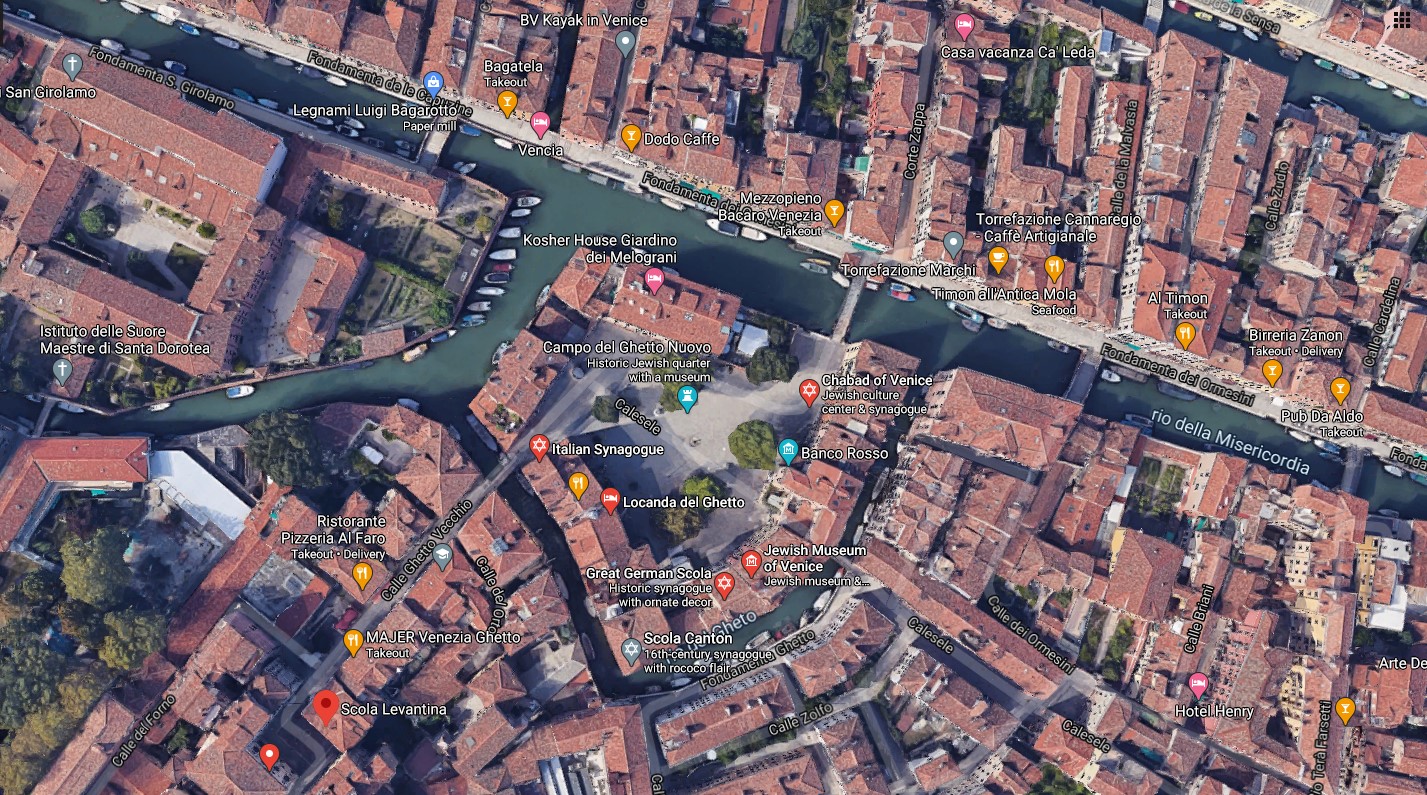The Venetian Ghetto was a segregated section of northern Venice where Jewish people in Venice were forced to reside, and return to by a nightly curfew starting at 1560. It is the origin of the term “ghetto” that is used to describe other segregated, slum-like areas predominantly occupied by minorities today. Venice was a medieval city notable for its functional zoning, and decentralized neighborhood clusters revolving around public squares.
The Campo di Ghetto Nuovo centered the Jewish Ghetto, where up to 5000 Jews from Italy, Germany, France, Spain and the former Ottoman Empire both maintained their own synagogues all with entrances to the square. This also created a unique opportunity for cultural exchange, and an example of the potential for the medieval Jewish Diaspora communities.
Around the square and elsewhere, the ghetto stacked up to 9 floors because of overcrowding, making them able to view the rest of the city from above. In 1560, the Venetian Board of Trade required Jews to barricade any windows and doors that overlooked the canals.
Some critics would point to the Jewish Ghetto as an example of the risks of planning overly restrictive “urban villages” that contain rather than connect its inhabitants for these reasons above.
https://www.huffpost.com/entry/urbanism-and-the-venetian-ghetto_b_855908
https://www.jewishbookcouncil.org/book/the-jewish-ghetto-and-the-visual-imagination-of-early-modern-venice
